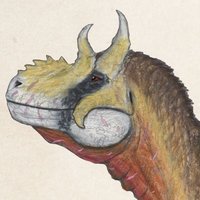
Cleanlymoss 🐋🦖🦤
@Cleanlymoss1
Paleobiology student and cetacean enthusiast. Endolger of Tyrannosaurs and enjoyer of anything Permian, Triassic or Cretaceous
24-08-2022 11:16:55
371 Tweets
304 Followers
236 Following






@Cleanlymoss1
Paleobiology student and cetacean enthusiast. Endolger of Tyrannosaurs and enjoyer of anything Permian, Triassic or Cretaceous
24-08-2022 11:16:55
371 Tweets
304 Followers
236 Following




